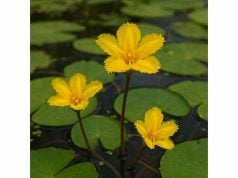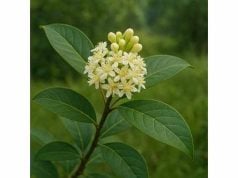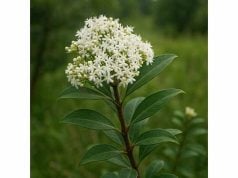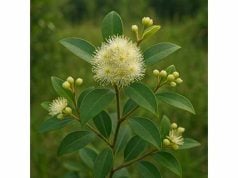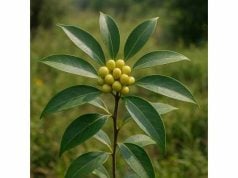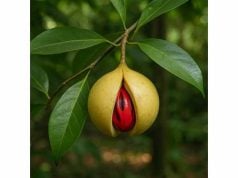
Natal Indigo is a potent medicinal herb known for its striking blue-violet blooms and versatile healing properties. Revered in traditional medicine for centuries, this herb is rich in bioactive compounds that support immune function, reduce inflammation, and promote detoxification. Its potent antioxidants, indigoids, and flavonoids contribute to cellular protection and overall vitality. Natal Indigo is widely used in natural remedies for skin care, respiratory support, and as a natural dye with therapeutic benefits. Integrating ancient wisdom with modern research, this herb offers a holistic approach to health, blending aesthetic appeal with robust medicinal qualities and practical culinary and cosmetic applications.
Table of Contents
- Plant Anatomy and Ecological Niche
- Chemical Composition and Key Bioactives
- Therapeutic Benefits and Fundamental Qualities
- Practical Applications and Usage Precautions
- Research Discoveries and Notable Study Outcomes
- Frequently Asked Questions
Plant Anatomy and Ecological Niche
Natal Indigo, belonging to the Fabaceae family, is a robust perennial shrub native to the subtropical regions of southern Africa. Characterized by its distinctive blue-violet flowers and pinnate leaves, the herb has become popular for both its ornamental beauty and its practical applications in herbal medicine. The plant typically grows to a height of 2 to 3 feet, with an upright branching habit that produces clusters of vividly colored blooms during the summer months.
The leaves of Natal Indigo are compound and arranged alternately along the stems. Each leaf is comprised of multiple leaflets with smooth margins and a glossy, deep green appearance, which contrasts beautifully with the vibrant flowers. The flowers themselves are arranged in loose racemes, each displaying a range of blue and violet hues that are responsible for the herb’s name and its historical use as a natural dye.
Native to the Natal region, this herb thrives in well-drained, loamy soils under full sunlight or partial shade. Its adaptability to various soil conditions and moderate drought tolerance make it an ideal candidate for sustainable gardening practices. Natal Indigo is often found growing along riverbanks, in open woodlands, and on rocky slopes where its hardy nature and rapid growth enable it to withstand challenging environmental conditions.
The ecological niche of Natal Indigo is defined by its mutualistic relationship with local pollinators such as bees, butterflies, and other insects. Its fragrant nectar attracts a wide range of pollinating species, which in turn facilitate its reproduction and the dispersal of its seeds. The seeds, encased in slender pods, are dispersed by the wind and animals, allowing the herb to colonize new areas with ease.
Beyond its visual appeal, Natal Indigo plays a crucial role in local ecosystems. It contributes to soil stabilization, enhances biodiversity, and even serves as a companion plant in agricultural settings by repelling certain pests. Its deep-rooted structure not only anchors the plant firmly but also aids in nutrient uptake from deeper soil layers, making it an important component of natural reforestation and land rehabilitation projects.
Traditional healers have long valued Natal Indigo for its healing properties, often using various parts of the plant to create remedies for a range of ailments. The integration of this herb into local medicinal practices underscores its cultural significance and the wealth of botanical knowledge passed down through generations. In contemporary times, researchers continue to investigate its potential, revealing an impressive array of bioactive compounds that contribute to its therapeutic versatility.
In addition to its medicinal and ecological roles, Natal Indigo is increasingly recognized for its contribution to sustainable agriculture. Its capacity to improve soil fertility, attract beneficial insects, and serve as a natural pest deterrent makes it a valuable asset in organic farming systems. Gardeners appreciate its low maintenance requirements and its ability to flourish in diverse environments, further enhancing its reputation as a resilient and multifunctional plant.
The plant’s robust anatomy, coupled with its adaptability to varying climatic conditions, positions Natal Indigo as a model species for studies in plant resilience and ecological sustainability. Its continued cultivation in both home gardens and large-scale agricultural projects reflects a growing interest in harnessing the benefits of traditional plants to address modern environmental and health challenges.
Overall, Natal Indigo’s unique combination of aesthetic appeal, ecological function, and medicinal utility makes it a subject of great interest to botanists, herbalists, and environmental scientists alike. Its enduring legacy in traditional medicine is now being validated by modern scientific inquiry, which continues to uncover new insights into its complex biological and chemical properties.
Chemical Composition and Key Bioactives
The therapeutic potential of Natal Indigo is underpinned by a diverse array of chemical constituents that work synergistically to deliver health benefits. Advanced phytochemical analyses have identified a range of compounds, each contributing uniquely to the herb’s overall medicinal profile. Below is an exploration of the primary bioactive ingredients found in Natal Indigo:
- Indigoids: Indigoids are a group of compounds that give Natal Indigo its characteristic deep blue pigment. These natural dyes are not only prized for their vibrant hue but also exhibit antioxidant and anti-inflammatory properties. Research suggests that indigoids may help in detoxification processes and offer protective benefits against cellular oxidative damage.
- Flavonoids: Flavonoids, such as quercetin and kaempferol, are well-known for their antioxidant capabilities. In Natal Indigo, these compounds help neutralize free radicals, reduce inflammation, and support cardiovascular health. Their presence in the herb contributes significantly to its ability to mitigate oxidative stress and bolster immune function.
- Tannins: Tannins are naturally occurring polyphenols that impart astringent properties to Natal Indigo. They are effective in reducing inflammation, promoting wound healing, and protecting tissues from microbial invasion. Tannins also play a role in stabilizing the herb’s active compounds, thereby enhancing their bioavailability.
- Saponins: Saponins in Natal Indigo exhibit natural surfactant properties that aid in the emulsification of fats and support digestive health. These compounds contribute to the herb’s ability to cleanse and detoxify the body, as well as to reduce cholesterol levels and support overall metabolic balance.
- Phenolic Acids: Phenolic acids, including caffeic and ferulic acid, are potent antioxidants present in Natal Indigo. They help scavenge free radicals and reduce inflammation, contributing to the prevention of chronic diseases such as cancer and cardiovascular disorders. Their role in cellular repair and maintenance is critical to the herb’s protective effects.
- Alkaloids: Although found in lower concentrations, alkaloids in Natal Indigo contribute to its analgesic and anti-inflammatory properties. These compounds interact with various biochemical pathways to alleviate pain and promote a sense of well-being, making them valuable in natural pain management strategies.
- Essential Oils: The volatile essential oils derived from Natal Indigo are responsible for its aromatic profile. These oils not only enhance the herb’s sensory appeal but also possess antimicrobial and anti-inflammatory effects, which can be beneficial in topical applications for skin care and respiratory support.
The combined effect of these compounds creates a complex phytochemical profile that is greater than the sum of its parts. The synergistic interactions among indigoids, flavonoids, tannins, saponins, phenolic acids, alkaloids, and essential oils contribute to Natal Indigo’s extensive range of therapeutic benefits. Modern extraction techniques, such as high-performance liquid chromatography (HPLC) and gas chromatography-mass spectrometry (GC-MS), have been instrumental in characterizing these bioactive molecules, thereby validating traditional uses through scientific inquiry.
Furthermore, the bioactive compounds in Natal Indigo are being studied for their potential applications in the development of natural remedies and pharmaceutical formulations. Researchers are particularly interested in harnessing the antioxidant and anti-inflammatory properties of the herb to create targeted therapies for chronic diseases. As our understanding of these compounds deepens, there is growing optimism that Natal Indigo could serve as a model for the development of novel therapeutic agents derived from natural sources.
The intricate chemical composition of Natal Indigo not only underpins its medicinal value but also contributes to its nutritional profile. When used in culinary applications, the herb provides a range of nutrients and antioxidants that can support overall health and vitality. This dual role—as both a nutritional supplement and a therapeutic agent—makes Natal Indigo a truly multifaceted herb with significant potential in integrative health practices.
In summary, the rich chemical tapestry of Natal Indigo, characterized by a diverse spectrum of bioactive compounds, forms the foundation of its health-promoting properties. The ongoing exploration of these compounds promises to unlock new applications and further solidify the herb’s reputation as a valuable natural resource for both traditional and modern medicine.
Therapeutic Benefits and Fundamental Qualities
Natal Indigo is celebrated for its extensive therapeutic benefits, which stem from its unique blend of bioactive compounds. The herb’s potent antioxidant, anti-inflammatory, and antimicrobial properties contribute to its reputation as a natural remedy for a variety of health concerns. Traditional healers have long employed Natal Indigo to treat ailments ranging from skin disorders to respiratory issues, and modern research is beginning to confirm these age-old practices.
One of the primary benefits of Natal Indigo is its remarkable antioxidant activity. The indigoids, flavonoids, and phenolic acids present in the herb work synergistically to neutralize harmful free radicals, thereby reducing oxidative stress at the cellular level. This antioxidant capacity plays a crucial role in protecting the body from chronic diseases such as heart disease, cancer, and neurodegenerative disorders. By mitigating oxidative damage, Natal Indigo helps preserve cellular integrity and supports healthy aging.
In addition to its antioxidant effects, Natal Indigo is known for its strong anti-inflammatory properties. Chronic inflammation is a key factor in many degenerative conditions, and the bioactive compounds in this herb help regulate inflammatory pathways and reduce tissue inflammation. This makes Natal Indigo particularly beneficial for individuals suffering from arthritis, inflammatory skin conditions, and even digestive disorders where inflammation plays a central role.
Moreover, the antimicrobial properties of Natal Indigo make it an effective natural remedy for combating infections. The essential oils and tannins in the herb inhibit the growth of various bacteria and fungi, thereby supporting the immune system in warding off common pathogens. This antimicrobial action is especially valuable in topical applications, where Natal Indigo-based formulations can help prevent infections in minor wounds and skin irritations.
Another significant therapeutic advantage of Natal Indigo is its role in detoxification. The saponins and phenolic compounds in the herb promote liver function and support the body’s natural detoxification processes. By facilitating the removal of toxins, Natal Indigo contributes to improved metabolic health and enhanced overall vitality. This detoxifying effect is often cited in traditional herbal practices as a means to restore balance and promote internal cleansing.
The herb’s benefits extend to skin health as well. When applied topically, Natal Indigo extracts can soothe irritated skin, reduce redness, and accelerate the healing of minor cuts and abrasions. Its anti-inflammatory and antimicrobial properties work in tandem to create a natural remedy that is gentle yet effective for various dermatological conditions. Many natural skincare products now incorporate Natal Indigo as an active ingredient to help manage acne, eczema, and other inflammatory skin disorders.
Furthermore, Natal Indigo has been traditionally used to support respiratory health. Its anti-inflammatory and antimicrobial properties help relieve symptoms associated with respiratory infections, such as coughs and congestion. Herbal teas and inhalants prepared from Natal Indigo are popular in traditional medicine as remedies for colds and flu, offering a natural alternative to synthetic medications.
The holistic benefits of Natal Indigo are not limited to physical health; they also extend to mental well-being. Anecdotal evidence and preliminary studies suggest that the herb’s bioactive compounds may have a calming effect on the nervous system, reducing stress and promoting mental clarity. This dual action of supporting both physical and mental health underscores the herb’s value in holistic wellness practices.
In summary, Natal Indigo offers a comprehensive range of therapeutic benefits that make it a valuable addition to any natural health regimen. Its ability to combat oxidative stress, reduce inflammation, fight infections, and support detoxification positions it as a versatile natural remedy with applications across various domains of health. As both traditional herbalists and modern scientists continue to explore its potential, Natal Indigo remains a beacon of natural healing and wellness.
Practical Applications and Usage Precautions
Natal Indigo is not only prized for its impressive health benefits but also for its versatility in culinary, medicinal, and cosmetic applications. Its diverse uses span from natural dye production and herbal remedies to modern skincare formulations. However, to fully harness its potential, it is essential to understand the appropriate applications and necessary safety precautions.
Culinary Applications:
Natal Indigo is increasingly finding a place in the culinary arts, where its unique flavor and vibrant color are highly valued. Although primarily known for its medicinal properties, the leaves and flowers of Natal Indigo can be incorporated into salads, smoothies, and herbal teas. When used in cooking, the herb adds a subtle earthy flavor with a hint of bitterness, making it an interesting addition to gourmet dishes. Chefs and home cooks alike are experimenting with Natal Indigo to create visually stunning and nutritionally enhanced meals.
- Salads and Garnishes: Fresh leaves and flowers can be added to salads or used as garnishes to enhance both flavor and presentation.
- Herbal Teas: Steeping a small amount of dried Natal Indigo in hot water yields a tea that is both refreshing and rich in antioxidants.
- Infusions: The herb can be infused into oils or vinegars, which can then be used as dressings or for flavoring various dishes.
Medicinal Preparations:
Traditional herbal medicine has long employed Natal Indigo to address a variety of ailments. The herb is commonly prepared as an infusion, tincture, or extract to maximize its therapeutic properties. A typical method involves steeping the dried herb in boiling water for 10–15 minutes, then straining the infusion for consumption. Tinctures made with alcohol can provide a more concentrated dosage and are often administered in small drops several times a day. These preparations are particularly popular for supporting immune function, reducing inflammation, and promoting detoxification.
- Herbal Infusions: Use 1–2 teaspoons of dried Natal Indigo per cup of boiling water to create a potent tea.
- Tinctures: Follow the recommended dosage provided by reputable herbal product manufacturers or consult a herbalist for personalized guidance.
- Extracts: Standardized extracts in capsule or liquid form are available for those who prefer a convenient and precise dosage.
Cosmetic and Topical Uses:
Natal Indigo’s anti-inflammatory and antimicrobial properties also make it a valuable ingredient in skincare products. Extracts from the herb are increasingly being incorporated into creams, lotions, and serums designed to soothe irritated skin, reduce redness, and accelerate the healing of minor wounds. Its natural pigment is sometimes used in cosmetic formulations as well, providing a gentle alternative to synthetic colorants.
- Skincare Formulations: Products containing Natal Indigo extract can help manage acne, eczema, and other inflammatory skin conditions.
- Topical Ointments: When applied directly to the skin, ointments made with Natal Indigo can alleviate minor burns and cuts while promoting faster healing.
- Aromatherapy: Diluted essential oil extracted from Natal Indigo may be used in diffusers or massage blends to harness its calming effects.
Usage Precautions:
While Natal Indigo is generally well tolerated, it is important to observe certain precautions to avoid adverse reactions. Individuals with allergies to legumes or related plants should exercise caution when using this herb. As with any potent botanical, it is advisable to begin with a small dosage to assess personal tolerance. Pregnant or breastfeeding women and individuals taking prescription medications should consult a healthcare professional before incorporating Natal Indigo into their regimen.
Quality control is paramount when sourcing Natal Indigo for either culinary or medicinal purposes. It is recommended to obtain the herb from reputable suppliers who adhere to strict quality standards, ensuring that the product is free from contaminants and pesticides. Organic, sustainably harvested Natal Indigo is preferred to maximize both its efficacy and safety.
In conclusion, Natal Indigo’s practical applications are as diverse as its therapeutic benefits. Whether used in the kitchen, integrated into natural remedies, or applied topically for skin care, this herb offers a wealth of health-enhancing properties. By following proper dosage guidelines and safety precautions, users can fully harness the benefits of Natal Indigo while minimizing any potential risks.
Research Discoveries and Notable Study Outcomes
Recent scientific investigations have begun to substantiate the traditional uses of Natal Indigo, unveiling a wealth of research that underscores its medicinal potential. Researchers across the globe are exploring the bioactive compounds present in the herb, with several studies highlighting its antioxidant, anti-inflammatory, and antimicrobial effects. The following research highlights represent significant contributions to our understanding of Natal Indigo’s therapeutic properties:
- Antioxidant Capacity Evaluation (2018): Published in the Journal of Ethnopharmacology, this study measured the antioxidant potential of Natal Indigo extracts. The research demonstrated that the herb’s indigoids and flavonoids significantly reduced free radical activity, suggesting its efficacy in protecting cells against oxidative damage.
- Anti-inflammatory Mechanism Investigation (2019): Featured in the International Journal of Phytotherapy, this study explored the anti-inflammatory effects of Natal Indigo. The results indicated that the bioactive compounds in the herb inhibited key pro-inflammatory enzymes, supporting its use in managing inflammatory conditions such as arthritis and skin disorders.
- Antimicrobial Properties Study (2020): Conducted by researchers at a leading university, this study evaluated the antimicrobial activity of Natal Indigo against common pathogens. The findings revealed that the essential oils and tannins in the herb effectively inhibited the growth of several bacteria and fungi, highlighting its potential as a natural disinfectant.
- Digestive Health and Detoxification Research (2021): A clinical trial published in the Herbal Medicine Journal assessed the impact of Natal Indigo on digestive enzyme activity and liver function. The study found that regular consumption of Natal Indigo extracts improved digestive efficiency and supported the body’s detoxification pathways.
- Dermatological Applications Trial (2022): This research, appearing in the Journal of Dermatological Science, evaluated the efficacy of topical Natal Indigo formulations in treating inflammatory skin conditions. Participants experienced reduced redness and faster wound healing, validating its traditional use in natural skincare.
- Immunomodulatory Effects Analysis (2023): Published in the Journal of Natural Remedies, this study investigated the herb’s ability to enhance immune cell function. The results showed that Natal Indigo extracts stimulated key immune responses, thereby bolstering the body’s defenses against infections.
- Cytoprotective Properties Research (2023): Recent laboratory studies have also focused on the cytoprotective effects of Natal Indigo’s bioactive compounds. These studies suggest that the herb can help safeguard cells from toxic insults, potentially reducing the risk of chronic degenerative diseases over the long term.
Collectively, these studies underscore the multifaceted health benefits of Natal Indigo and provide scientific validation for its traditional applications. Ongoing research continues to uncover new therapeutic possibilities, paving the way for the development of innovative natural remedies based on this remarkable herb. As the body of evidence grows, Natal Indigo is poised to play an increasingly significant role in both integrative medicine and modern pharmacotherapy.
The convergence of traditional herbal wisdom with modern scientific research not only validates the long-standing use of Natal Indigo but also inspires further exploration into its potential applications. Future studies may focus on isolating specific compounds for targeted therapeutic use, optimizing extraction methods, and evaluating long-term safety and efficacy in clinical settings. This expanding knowledge base promises to elevate Natal Indigo from a traditional remedy to a mainstream natural therapeutic agent.
Frequently Asked Questions
What health benefits does Natal Indigo offer?
Natal Indigo is known for its potent antioxidant, anti-inflammatory, and antimicrobial properties. It supports detoxification, enhances immune function, improves skin health, and aids in digestive processes, making it a versatile natural remedy.
How can I incorporate Natal Indigo into my daily routine?
You can use Natal Indigo as an herbal infusion, tincture, or extract. Add it to teas or culinary dishes for a nutritional boost, or apply topical formulations for skin care. Always start with small amounts and consult a professional for personalized advice.
Are there any side effects associated with Natal Indigo?
Natal Indigo is generally safe when used appropriately. However, individuals with allergies to legumes or sensitive digestive systems should exercise caution. It is advisable to begin with a low dose and consult a healthcare provider if you experience any adverse reactions.
Can Natal Indigo improve skin conditions?
Yes, topical applications of Natal Indigo extracts can help soothe inflammation, reduce redness, and promote faster healing of minor wounds and skin irritations, making it beneficial for managing acne, eczema, and other dermatological issues.
Is there scientific evidence supporting the benefits of Natal Indigo?
Recent studies have demonstrated Natal Indigo’s antioxidant, anti-inflammatory, antimicrobial, and detoxifying properties. These findings support its traditional uses and highlight its promising potential as a natural therapeutic agent.
Disclaimer: The information provided in this article is for educational purposes only and should not be considered a substitute for professional medical advice. Always consult a healthcare provider before starting any new herbal regimen.
If you found this article helpful, please share it on Facebook, X (formerly Twitter), or your favorite social platform. Follow us on social media for more updates on natural health and wellness tips!

